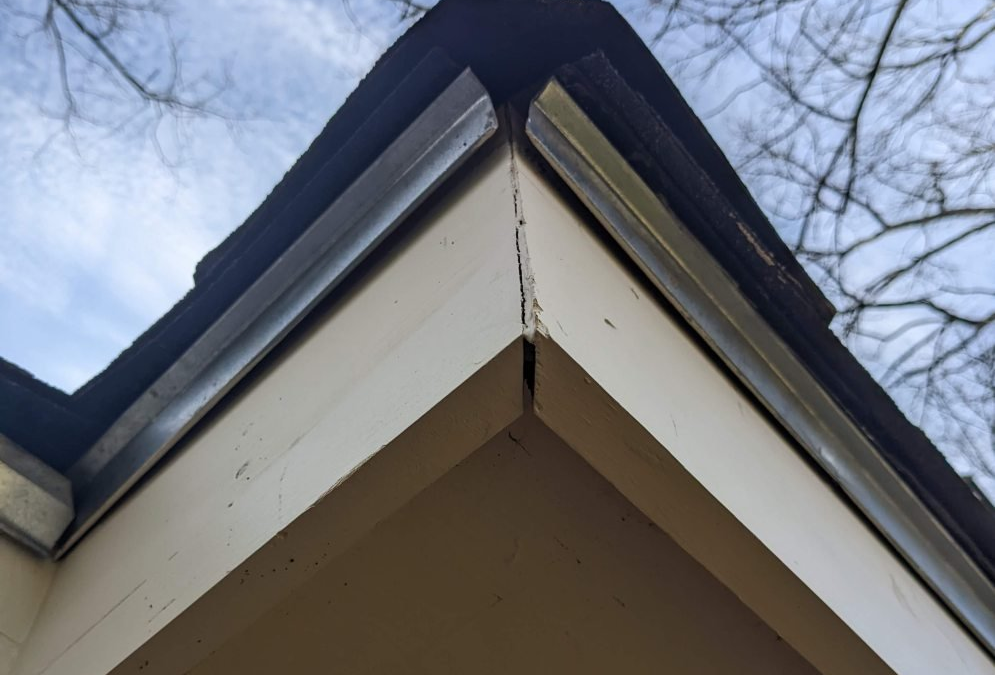Gutter drip edges are an essential, yet often overlooked, component of an effective rain gutter system. In this blog post, we’ll dive deep into everything you need to know about gutter drip edges—from their design and functionality to maintenance tips and installation considerations. Tiger Gutters, a well-regarded name in Memphis, TN, understands the importance of proper gutter systems, and in this post, we focus purely on providing informational insights into the topic.
What Is a Gutter Drip Edge?
A gutter drip edge is a metal or vinyl strip that is installed at the edge of the roofline, designed to direct water away from the fascia and prevent water from damaging the underlying structure. Essentially, the drip edge serves as a barrier that ensures rainwater flows directly into the gutters rather than seeping behind the roof, where it can cause rot or structural damage.
Key points about gutter drip edges:
- Purpose: Guides water into the gutter system while protecting the roof and fascia.
- Materials: Commonly made from aluminum, copper, or vinyl.
- Design: Typically installed along the eaves and overhangs of a roof for optimal water management.
Benefits of a Gutter Drip Edge
Implementing a drip edge as part of your gutter system can provide several benefits, including:
- Enhanced Water Control: The drip edge ensures that water flows correctly from the roof into the gutters, reducing the risk of water damage to both the roof and the foundation.
- Prevention of Roof Damage: By directing water away from the fascia and roof deck, a drip edge helps to prevent premature aging of roof materials.
- Cost Efficiency: Proper water management can help avoid costly repairs by mitigating water damage over time.
- Improved Aesthetics: A well-installed drip edge contributes to a cleaner, more finished look for your home’s exterior.
- Increased Longevity: Protecting the roof and gutter system from water damage can extend the life of both.
Types of Gutter Drip Edge Materials
When it comes to choosing a material for your gutter drip edge, several options are available, each with its own set of characteristics:
Aluminum
- Durability: Lightweight, rust-resistant, and durable.
- Versatility: Commonly used due to its balance between strength and cost-effectiveness.
- Ease of Installation: Often available in pre-formed designs that are easy to install.
Copper
- Aesthetics: Offers a unique, upscale look with a natural patina that develops over time.
- Longevity: Extremely durable and can last for decades with proper maintenance.
- Cost: Typically more expensive than aluminum or vinyl, making it a premium option.
Vinyl
- Cost-Effective: Generally the least expensive option available.
- Maintenance: Resistant to rust and corrosion, though it may not be as durable under extreme weather conditions.
- Flexibility: Easy to work with and available in various colors to match your home’s exterior.
The Installation Process: Key Considerations
While installation details can vary, understanding the general steps and considerations for installing a gutter drip edge is crucial:
- Assessment and Planning: Evaluate the roofline and determine the best placement for the drip edge. Accurate measurements are essential to ensure proper alignment with the gutters.
- Choosing the Right Material: Consider factors such as climate, roof material, and overall aesthetics when selecting the appropriate material.
- Secure Attachment: The drip edge should be securely fastened to the roof fascia to prevent movement during heavy rain or wind.
- Integration with Gutters: It is important to ensure that the drip edge properly aligns with the gutter system to maximize its efficiency in directing water flow.
- Professional vs. DIY: While some homeowners opt for a DIY installation, others may choose to consult with professionals to ensure that the installation meets best practices without inadvertently causing damage to the roof or gutter system.
Maintenance Tips for Your Gutter Drip Edge
Proper maintenance is key to ensuring that your gutter drip edge continues to perform its function effectively:
- Regular Inspections: Inspect your gutter system, including the drip edge, at least twice a year. Look for signs of wear, damage, or misalignment.
- Cleaning Debris: Remove leaves, twigs, and other debris that can clog the gutters and cause water overflow.
- Check for Corrosion: Especially in areas with high humidity or salt exposure, inspect metal drip edges for signs of rust or corrosion.
- Secure Fasteners: Over time, fasteners can loosen. Periodically check to ensure that the drip edge is securely attached to the fascia.
- Professional Assessments: If you’re uncertain about the condition of your gutter drip edge, consider having a professional assessment to catch potential issues early.
Design and Aesthetic Considerations
Beyond functionality, the design and aesthetic impact of a gutter drip edge are worth considering:
- Seamless Integration: A well-designed drip edge should blend seamlessly with your roofing material and overall home design.
- Custom Options: Homeowners can choose from various finishes and colors to match their home’s exterior. Custom solutions are available for those seeking a particular look.
- Architectural Impact: A clean, well-installed drip edge can contribute significantly to the overall curb appeal, offering a polished and finished appearance to the home.
Choosing the Right Gutter Drip Edge for Your Home
Selecting the optimal gutter drip edge involves evaluating several factors:
- Climate Considerations: In areas with heavy rainfall or frequent storms, opting for a more durable material like aluminum or copper may be beneficial.
- Roof Material Compatibility: The drip edge should complement the material of your roof for both performance and aesthetic reasons.
- Budget Constraints: While high-end materials like copper offer excellent longevity and appearance, budget-conscious homeowners may find vinyl or standard aluminum to be sufficient.
- Local Environment: Consider the specific environmental challenges of your area, such as humidity, temperature fluctuations, or coastal conditions, which might impact the choice of material.
Frequently Asked Questions (FAQs)
What is the primary function of a gutter drip edge?
The main function of a gutter drip edge is to direct water away from the roof and into the gutter system, thereby protecting the fascia and roof deck from water damage.
Can I install a gutter drip edge myself?
Many homeowners choose to install a drip edge on their own; however, if you’re unsure of the process, seeking professional guidance can ensure proper installation and performance.
How often should I inspect my drip edge?
It is recommended to inspect your gutter drip edge at least twice a year, particularly before and after the rainy season, to catch any potential issues early.
What are the signs of a failing drip edge?
Signs of a failing drip edge include visible rust, misalignment, or water damage near the roof fascia. Regular maintenance can help prevent these issues.
The Importance of Informed Decisions
Understanding every component of your gutter system, including the drip edge, can significantly impact your home’s longevity and overall protection from the elements. The right drip edge not only improves water management but also enhances the aesthetic appeal of your home. As with any home maintenance or improvement project, having detailed, reliable information is key to making informed decisions.
Conclusion
Gutter drip edges play a vital role in ensuring that rainwater is properly channeled away from your home, protecting both the roof and the foundation from potential water damage. By understanding the various materials available, installation best practices, and maintenance requirements, homeowners can make better-informed decisions about their gutter systems. Tiger Gutters from Memphis, TN, emphasizes the importance of knowledge and proper planning when it comes to all things related to gutters. We hope this comprehensive guide provides you with the insights needed to appreciate the value and function of a well-designed gutter drip edge.

